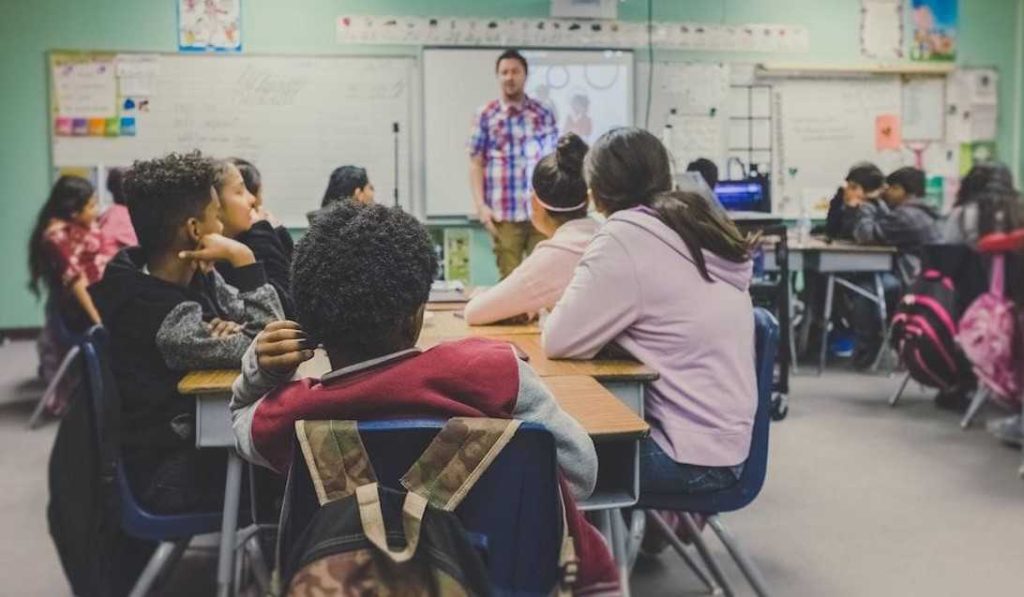Engagement may seem like a buzzword among educators or an overused missive from administrators; however, its importance in classroom structures cannot be overstated. Getting students engaged is the key to every other measure of success. Without a highly engaged classroom, teachers will face poor test scores, disciplinary issues, absenteeism, and many other problems.
Whether you are prepping for your very first year in the classroom or you are a seasoned but frustrated teacher looking for a fresh start, we have compiled the characteristics of a highly engaged classroom below to plant the seeds for your specific strategies.
The teaching experience is individual and personalized, and your students are best served by a teacher who knows how to play up his strengths. Take this practical guidance as just that: a guide. Then put your own special touch on it in the classroom. As a result, you will inevitably see student success.
1. Expectations Are Clear
Clear expectations are critical to a highly engaged classroom. Students who do not understand what is expected will not understand when they fail to meet the teacher’s expectations, leaving them discouraged and less willing to participate in the classroom.
By making your expectations known at the outset—everything from your homework policy to classroom etiquette—you will set your students up to succeed in an engaged classroom.
2. Instruction Is Varied
One of the best ways to keep students interested and engaged is variety, which plays a big role in shaping student motivation. An effective classroom environment has various curricular possibilities, where teachers implement everything from traditional lectures to video instruction to guest speakers and more.
Students will become bored quickly if they experience the same thing, day in and day out, leaving them less engaged and focused. By keeping them on their toes and changing direction throughout the class, you will find them more apt to concentrate on the class and less likely to drift off in a daydream.
Variety also helps teachers stay challenged, motivated, and enthusiastic. If you are reciting the same lecture on amphibians you have been using for 20+ years, it might be time to change things up and find a fun new way to teach your students about frogs, toads, newts, and salamanders!
3. Students Are Challenged
Nothing leads to boredom more quickly than an environment where students are not challenged. If the material is too easy, your expectations are too limited, and the students finish their work too quickly, you might need to reconsider your approach.

An effective and engaged classroom is one where all students, even the brightest, are challenged often.
4. Ideas and Creativity Are Encouraged
The most effective teachers can balance keeping students and lesson plans on track while remaining open to new ideas and creative thinking. If students feel comfortable sharing ideas, they will remain engaged; when students feel like their ideas are consistently “shot down,” they tend to disconnect.
Encouraging creative solutions to problem-solving will go a long way toward keeping your students engaged and shaping them into future adults who can tackle real-life issues with creative problem-solving techniques. That’s a win-win!
5. Information Is Bite-Sized
When implementing the aforementioned variety in the classroom, keep things bite-sized. In today’s world, students are used to quick snippets of content. To keep their attention, you must keep lessons moving and changing often.
6. Respect Goes Both Ways
Most teachers let their students know expectations for following class rules, arriving on time, and so forth, but try letting them know what they can expect of you as well.
For example, you could start the academic year by telling them they have your trust and respect until they prove otherwise, that you will celebrate their achievements (more on that below), and that you will offer additional help to any student who seeks it.
Demonstrating your commitment to your students (and your respect for them) is another big factor in keeping them engaged.
7. Achievements Are Celebrated (and Often!)
Nothing helps students feel more valued and stay engaged in learning than when their achievements are noticed and celebrated. This can go well beyond the grades they earn in your class.
You can find ways to celebrate the academic growth of each student with a student wall of fame, class shout-outs, or just by dropping a handwritten note congratulating them on conquering a difficult task.

8. Setbacks Are Analyzed for Opportunities
Effective teachers use setbacks as an opportunity for growth, helping students analyze and consider where they went wrong and how to avoid the same mistakes in the future.
Taking the time to review mistakes, rather than just correcting them and moving on, sets effective teachers apart from those who fail to make a meaningful impact on students.
A growth mindset in the classroom begins with the time devoted to this kind of lesson, and students who are given a true opportunity to learn from past mistakes will remain engaged in the future.
9. Making Content Relevant
One of the biggest challenges for educators is making the subject matter relevant to students. Content infused with real-life examples helps drive your points home, whether you apply statistics to a student’s favorite baseball team or describe a historical event in the context of a current societal challenge.
Anything you can do to relate the subject matter to students’ everyday lives will improve your chances of engaging young people.
10. Humor Is Welcome
Finally, an engaged and effective classroom always has room for a little bit of levity. Students need to see their teachers laugh (even at themselves), making them feel more comfortable and willing to participate in a classroom activity. A little silliness can go a long way toward the student engagement you need for the more serious aspects of the learning environment.




